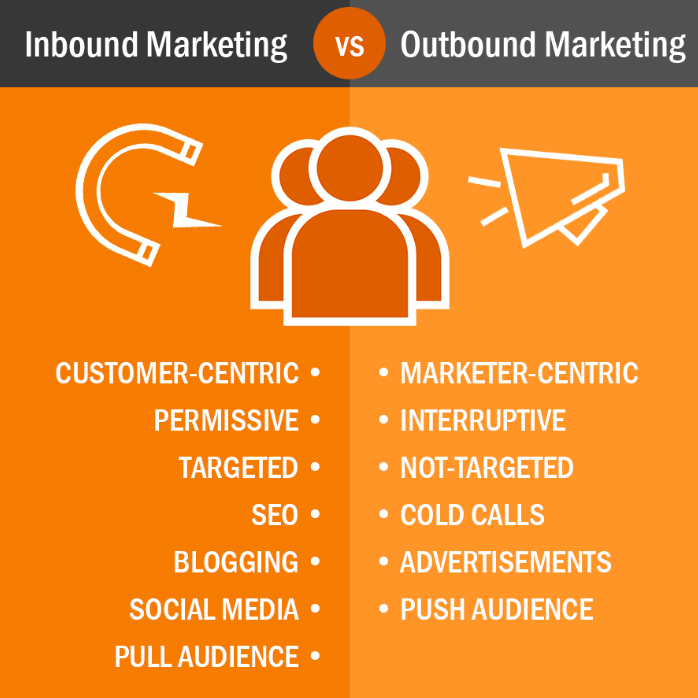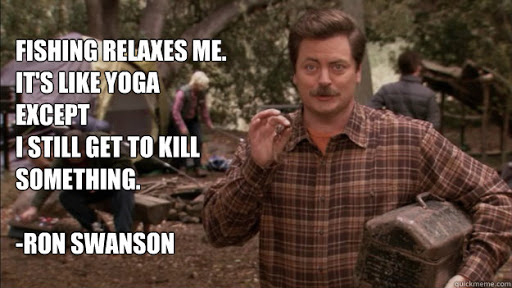I hate marketing and I hate fishing. Let’s get this done so I can go back to re-binging The Mandalorian.

I feel you. I really do.
Though, onward, we must go. (I have spoken.)
Now that you’re in the “authenticity” camp (if you weren’t already), let’s explore the best ways to get your products and services in front of the right clients with the problems that you were made to fix.
But first, a recap on some fundamentals of highly effective marketing strategy:
- Connect with your audience about a pain point they’re having.
- Help them to imagine a better way, option, solution, sandwich…
- Then, guide them down a path that shows them the benefits of your way, option, solution, sandwich, mouth guard, etc.

Before you go chasing after the whole wide world via the internet or the dog park, consider these two questions:
- Can you do those things with anyone?
- Will everyone be interested in what you have to offer?
I’ll save you time and answer this for you: no and nope.
PLUS, if you’re like the rest of us (e.g. not Oprah or Tom Hanks) then you probably have limited time, energy and resources.
This is why it’s critical to identify who your right fit clients are, so you don’t waste your precious turns around the sun and money.
Typically, businesses will choose one of two different marketing approaches (Outbound and Inbound marketing), which sometimes work in tandem, for their products and/or services.

These two approaches ultimately depend on what business objective you’re after (e.g. how you want your brand’s message to be received).
The Outbound Marketing Approach (aka “Fishing by Trawling”)
Outbound marketing is akin to casting a wide net while fishing. Say you’re going to catch some Tuna for your clients, but you’re new to the area so you don’t quite know where the tuna like to hang out. So, you decide to cast a net and trawl. To get started you thrust your net to the bottom of the ocean and drag it along the bottom for miles capturing everything that comes in its path.
All the while, you hope you get some tuna and figure out where they tend to congregate and mingle while being mindful along the way, because you’re humane, to free all the non-tunas like dolphins, lobsters and other fish so they can go on with their merry lives. (After all, your clients only want tuna.)
At the end of the day, you’re like, “awesome!” I caught a lot of the tuna that my land faring compadres will buy for their dinner. You look at your log notes (because you’re a wise captain and you take them) and you see that a certain area by that orangish red coral reef (where the dolphins also love to play) is where you picked up the most of this particular tuna. Sweet!
Now that you learned this, you can take a more focused approach (say line and pole) to save you and your crew the time, money and energy of trawling large areas of the ocean and having to pick out and free all the non-tunas that got stuck in your net.
Now, if you have clients that don’t care what fish they eat. Literally, it just has to be fish, then by all means keep trawling the ocean floors to get fish. (Just keep releasing the dolphins because we need to protect our internally optimist creatures and everyone hates a dolphin murderer. There, I said it.)
You might even develop some cool technology in the shape of an underwater drones that only picks out fish of a certain size for your fish-eating customers (again saving dolphins, manatees, seals, whatever else lives in the ocean… so yeah, just keeping it real, friends). Alright, I just checked and this already exists…
Overall, outbound marketing (or “fishing by trawling”) is considered to be a more “traditional” type of marketing driven by reaching out to as many folks as possible (across age, gender, ethnicity, income and other demographics) to see if they’d like to try your new product (and hopefully, fall in love with it).
Typically, this approach uses the strategies such as high-traffic print ads (magazines, newspapers, billboards), trade shows, commercials and ads on cable TV, radio, internet TV and radio, cold calling, trade shows, neighborhood mailings, emails blasts (to purchased lists) and digital banner ads place on unrelated websites. Its heavily promotion based.
Before you write this approach off as big business and impersonal, there are times that outbound marketing will work well, if not better, for your business. For example, this approach works well for companies that:
- New companies where focus is on exposure and brand awareness
- Have a diverse customer base (the more, the merrier!)
- Are small and operate mostly locally.
- Or, are very large and operate at the international level (think Coca-Cola, McDonald’s, etc.).
An excellent example of this is the website design company, Squarespace. There was a time when it was common to see them featured on two TV commercials, one radio ad, four Youtube video ads, one podcast (and an obscure one at that) all within an hour’s time. I mean it felt like they basically canvassed the internet. It was impressive. Why is that? Well, apparently everyone needs a website, even those people who didn’t know they did. Now, Squarespace is a household name and even, your dog and 4 years old nephew has their own websites.
Outbound marketing, like all things, has its pros and cons.
Pros:
- Great for new companies that want more exposure and are focused on brand awareness
- Works well for older generations since they’re more familiar and comfortable with consuming information in these ways
- Can be adapted for online environments (digital banner ads instead of print ads)
Cons:
- It’s getting less and less effective (due in part to general increase of disruptions and noise in daily life and the arrival of more tech (ad blockers) that helps to limit this as well as it’s easier for consumers to research for exactly what they want and to get it).
- Some strategies take a lot of time, energy and money for little return on viable leads and it’s still necessary to vet (or qualify) them.
- Can come across as impersonal
The Inbound (“Target”) Marketing Approach (aka “Fishing by Line and Pole” in Your Special Secret Spot)
Let’s say that a. you tried fishing by trawling and know where your best clients (fish) like to spend their time or b. you already know who your fish are and where they like to hang out. If a or b are true, then target marketing (or “fishing by line and pole) is the best approach for you.

Line and pole marketing is attraction, not promotion, based and it entirely focused on building long term relationships with clients.
It’s definitely more modern, content-rich, focused on two-way conversations and is driven by consumers rather than the companies.
Typical target marketing strategies include investing in SEO (makes it easier for clients to find you on the internet via search engines), blogs, and social media channels, e-books and white papers, YouTube videos and webinars.
Target marketing works well for if your company’s goals are to:
- Aim your efforts at a specific group of consumers (typically by demographic, geographic, or psychographic segmentation).
- Keep costs down (instead of mailing to everyone, you’re mailing only to your specific audience).
- Customize your campaigns. (While trawling marketing would send out an email blast to an entire email list, targeted marketing allows you to pick and choose clients that fit a particular type (or persona – more on that soon…).
A tech company that’s hitting homers with the inbound marketing is the productivity app, Groove. The founders not only solved a problem that tech startups with customer support teams struggle with (sharing a shared inbox) but they ended up becoming more efficient and generating more sales. Obviously, they have an amazing product and service but that’s not the only thing that makes them stand out among their competition. They use a lot of inbound marketing techniques (and produce compelling content) thereby “attracting” their ideal clients like a fish to water. For example, their blog answers clients’ questions by educating them and providing a larger context of best support practices that help them to better serve their clients and improve their productivity. They offer a free newsletter, are active on social media and have great design and website layout (okay, this technically isn’t a “listed” strategy but it is really important.)
Targeting marketing also has its pros and cons.
Pros:
- Allows you to more authentically connect with clients and feels personal
- Attracts more qualified leads (since consumers seek out the company’s products and services and in doing so pre-qualify themselves)
- More accessible and user friendly
- Cheaper
Cons:
- Doesn’t show immediate results and can take longer to get
- Can be hard for businesses to get visibility is occupying a market with bigger, more established brands and
- Can take longer and be harder to build new clientele
Here’s the deal – whether you choose the “fishing by trawling” method, the “fishing by line and pole” method , or a combination of both, the next question you’ll need to answer is who are your “right” people? We’ll cover that next so hang tight!
Got Marketing Questions? We can help.
By clicking this button, you submit your information to Scott Growth Strategies, who may use it to communicate with you regarding this and other services.
